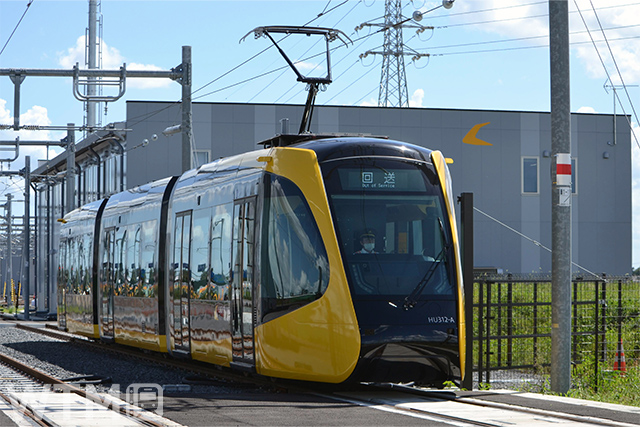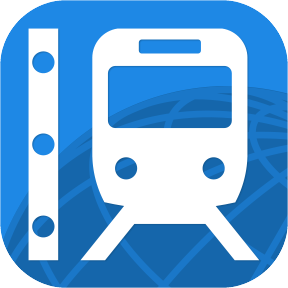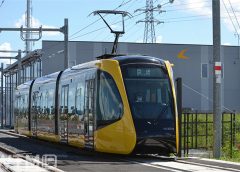A newly opened LRT (Light Rail Transit), Utsunomiya Haga Light Rail Line (commonly known as the “Light Line”) is operated by Utsunomiya Light Rail (Headquarters: Utsunomiya City, Tochigi), and they published the timetables and fares after the start of commercial operation.

A “parade” marching with the LRT on the opening day
For the opening of the LIGHTLINE on August 26, 2023 (Sat), proficiency operation is being carried out in all sections from “Utsunomiya Station East Stop” to “Haga Takanezawa Industrial Park Stop”. This is the first time in Japan that an LRT will be built as a completely new route, and Utsunomiya City’s urban development strategy is also attracting attention, which aims to create a “network-type compact city” centered on the LRT.
The 14.5 km route that connects industrial parks and schools scattered east of Utsunomiya Station is about to be opened as a “priority preparation section” for the overall plan, and about 60% of the total is combined track sections with cars. 3-car-combined 17 low-floor trains with a total length of 30m and a capacity of 160 passengers will be introduced, and it is expected to be used by approximately 16,000 people per day, mainly for commuters.
According to the Shimotsuke Shimbun, Honda Motor Co., Ltd. has decided to abolish the shuttle buses connecting their research and development base of the Haga Industrial Park (Haga Town) and Utsunomiya Station from September 1 (Fri) after the LRT opened, which is operated by them for commuters and business travelers. It is expected that having employees use the LRT will lead to alleviation of traffic congestion, and similar movements are likely to spread to other companies along the LRT.
On the opening day August 26 (Sat), in addition to the opening and departure ceremony, the commemorative event “LIGHTLINE Parade” will be held on the road along the track about 200m from the Utsunomiya Station East. For about 30 minutes starting at 11:40, a group of flags carrying many messages will lead the LRT vehicle, and professional performers and local high school students will join in to celebrate the opening. Viewing from the roadside is free, but depending on the situation, admission may be restricted.
In addition, on the opening day, a special “opening day timetable” will be used, and general passengers will be possible from the train that departs around 15:00.
(See the chart below for details such as LRT “LIGHTLINE” service schedule, first and last train timetables, normal and season tickets fare tables.)
![[Chart] LRT "LIGHTLINE" service schedule, first and last train timetables, normal and season tickets fare tables](https://en.wtmnews.net/wp-content/uploads/sites/3/2023/08/d76d3e36bda2e05e0e667020f11cc740-840x840.png)
Every 8 minutes during peak hours / 12 during the day
From the next day onwards, the normal timetables are valid, and the business hours are from 4:00 am to midnight on weekdays, and from 5:00 am to 11:00 am on weekends and holidays. During peak hours in the morning and evening, there are 7 to 8 trains per hour at approximately 8 minute intervals, and 5 trains per hour at approximately 12 minute intervals during other times of the day and on weekends and holidays. In addition to trains running through the entire line, there are also services that start and end at Hiraishi Stop, where the depot is located, or return at the Green Stadium Stop on the way.
The last outbound train bound for Hiraishi leaves Utsunomiya Station East at 23:46 (on all days), and you can catch it from the last Tohoku Shinkansen “NASUNO 281” leaving Tokyo Station at 22:44 (arriving at Utsunomiya at 23:37). The last train to Haga Takanezawa Industrial Park, the final stop, is much earlier than this, leaving the Utsunomiya Station East at 23:01 (22:35 on weekends and holidays).
Local trains that stop at each stop are expected to take about 44 minutes, but for the time being, taking into consideration that it requires enough time to collect fares, the trains will run from the start to the end in 48 minutes. In addition, it is assumed that rapid trains will run passing through some stops, but it will not be set at the beginning of the opening. The operating company is considering reviewing the timetable revision scheduled for the spring of 2024 so that it can be more convenient.
Regarding the LIGHTLINE fare, an application to the Kanto District Transport Bureau of the Ministry of Land, Infrastructure, Transport and Tourism, Japan has been approved to set a section-based fare corresponging to distance in kilometers in increments of 50 yen, from 150 yen for the first ride to 400 yen. The discount rate for 1-month season ticket for commuters is 37% and 47% for day-scholars. They will also apply for child discounts and handicapped discounts, which are 50% off the regular fares.
Transportation IC cards such as “Suica” and “PASMO” can be used to pay the fare. For the use of the Utsunomiya regional transportation IC card “totra”, the application of services such as “transit discount” currently available for route buses and local transportation is also being considered. When using cash, you will need to get a numbered ticket from the machine installed at the tram stop before boarding.
The normal fare to the “Utsunomiya University Yoto Campus Stop”, which is the closest to the complex facility “Bell Mall”, is 150 yen for adults and 80 yen for children, as it corresponds to the minimum fare section within 3 km from the Utsunomiya Station East. This starting fare is a cheap setting even if you look at it around Japan. Since it is operated by separating the upper and lower parts of public facilities, there is no need to reimburse construction costs, so it was possible to realize a low fare that is “easy for anyone to use as public transportation.”


 [JR Pass] JR East-South Hokkaido Pass | Save time and money exploring eastern Japan and Hokkaido (Ad by KKday)
[JR Pass] JR East-South Hokkaido Pass | Save time and money exploring eastern Japan and Hokkaido (Ad by KKday) [Japan] JR East Pass (Tohoku Area) E-Ticket | Explore all the major tourist spots in northeastern Japan with easy access to transportation (Ad by KKday)
[Japan] JR East Pass (Tohoku Area) E-Ticket | Explore all the major tourist spots in northeastern Japan with easy access to transportation (Ad by KKday)



